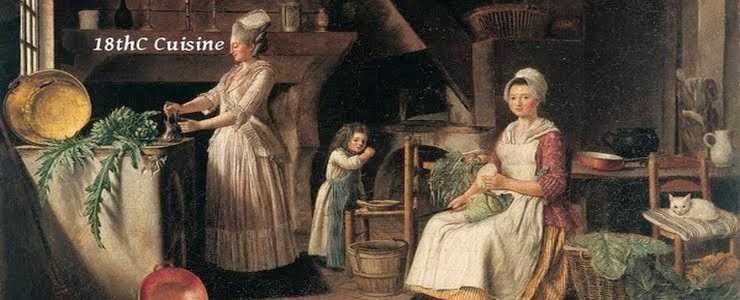
This savory strudel is boiled, not baked and is also known by [strucolo, rotolo or strukel]; also similar to napkin dumpling. Again, this is a dish found on the margins of Northern & Eastern Italy, and reflects those cuisines of the surrounding areas.
Savory Italian Strudel
Use the same paste* as with rissoles; make a farce [filling] in this manner: sauté finely diced onions in butter until light golden; add fine bread crumbs, grated Parmesan, cream, some egg[s] to bind, stir & season to taste, & let it cool; roll out your paste and put it on a floured tablecloth on a large work surface, continue stretching and rolling dough until very thin; spread your farce evenly over the dough, & begin to roll this strudel longitudinally by using the tablecloth to help you turn the roll, & tighten the roll [not loosely rolled]; wrap it in a well tied up cloth, & put it to cook in boiling water, with a little salt, for one hour; draw it out, unroll from the cloth & cut it in slices, & arrange it in a dish; cover with more grated Parmesan & melted butter & serve. It is also done sometimes with cabbage, spinach, sorrel, cheese or beef marrow.
*Rissolles Paste or Italian Pasta Dough
Make a paste with flour, egg whites, salt, & tepid water; knead it soft [until smooth for about 10 minutes] & let it rest below [covered by] a pan for 15 to 30 minutes; roll out in the manner the recipe directs.
Observations:
I used sorrel and found this strudel tangy and delicious; I served it with browned butter.
Shredded cabbage fried and seasoned with cardamom is also a delicious filling.
This strudel comes away from the dumpling cloth very easily. Allow it to cool slightly before slicing.
Strouille à l’Italienne.
C'est la même pâte** qu'aux rissolles; vous faites une farce de cette maniere: vous hachez des oignons bien menus en des, & les passez au beurre; presque cuits, vous y mettez de la mie de pain bien fine, Parmesan rapé, de la crême, quelques œufs pour lier le tout assaisonné de bon goût, & le laissez réfroidir; vous avez votre pâte ci-devant; vous étendez une nape sur une table, vous saupoudrez de la farine; vous étendez votre pâte dessus, comme pour des rissolles; vous jettez votre farce dessus, & vous en couvrez la pâte le plus mince que vous pouvez avec votre couteau; ayant étendu cette farce, vous roulez cette pâte comme un boudin en long, & la retournez en rond; vous l'enveloppez dans un torchon bien ficelé, & la mettez cuire à l'eau bouillante, avec un peu de sel, pendant une heure; étant cuite, vous la tirez & la coupez par tronçons, & l'arrangez dans un plat, du Parmesan rapé dessus, & beurre frais que vous faites fondre, jettez dessus, & servez. Il s'en fait aux choux, aux épinards, à l'oseille, & a la moëlle de Bœuf, & fromage.
**Pâte à Rissolles à l’Italienne
Vous faites une pâte avec farine, blancs d'œufs, sel, & de l'eau tiede; vous la faites molle & la laissez reposer dessous une casserolle, vous en servez de cette maniere.
Le Cuisinier Gascon. A Amsterdam. 1740, p.39.




